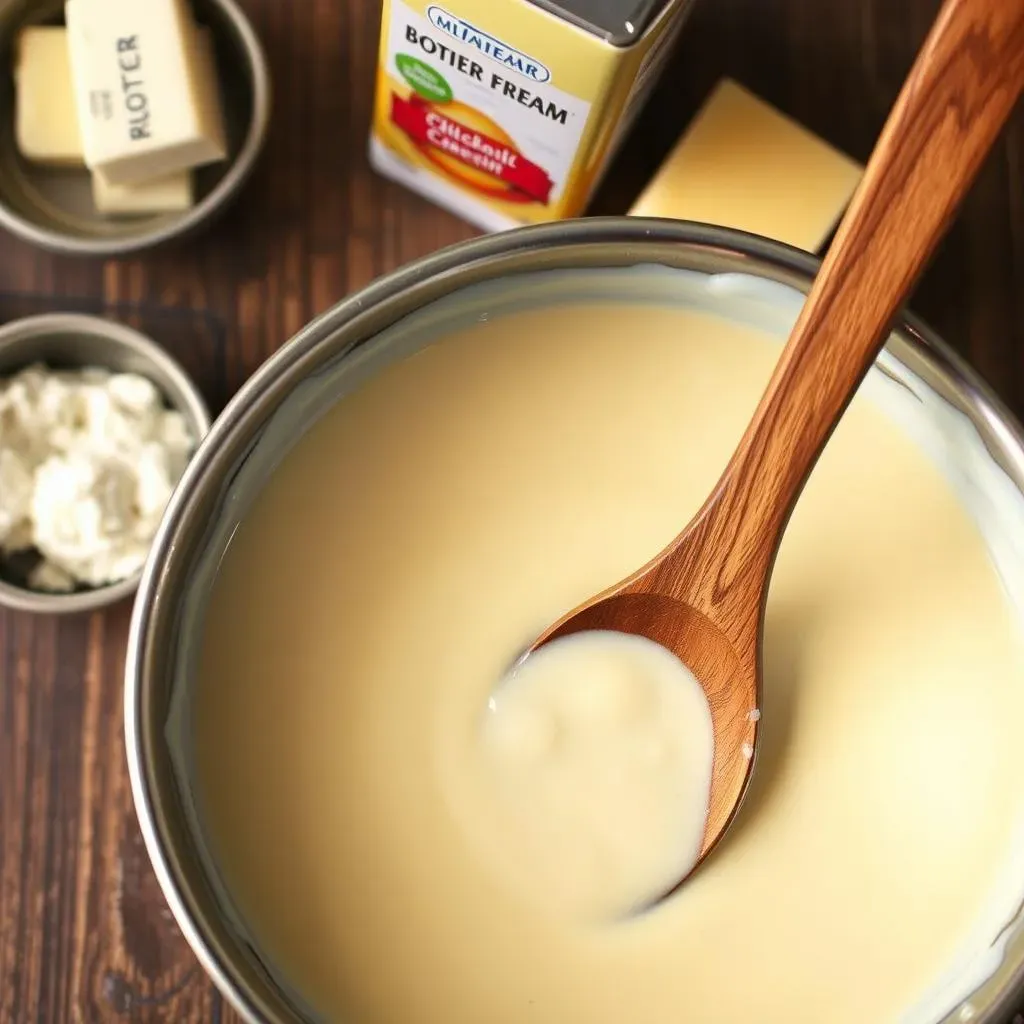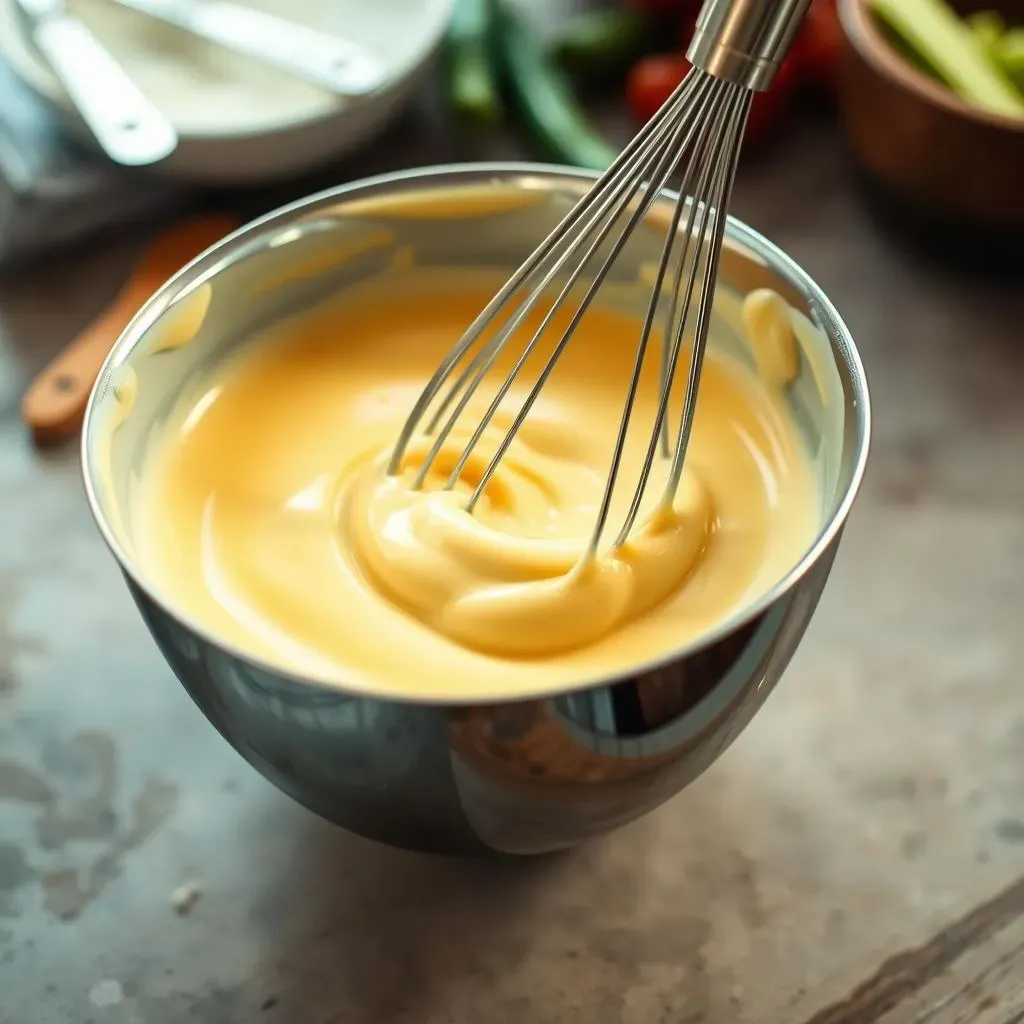Table of Contents
Ever craved that creamy, tangy sauce that elevates enchiladas from good to unforgettable? That's the magic of a great Mexican sour cream sauce for enchiladas, and it's easier to make at home than you might think. Forget the store-bought stuff, this recipe is all about fresh ingredients and simple techniques that deliver a rich, smooth sauce that'll have everyone asking for seconds. We're not just talking about a basic topping; this sauce is a culinary chameleon, perfect for drizzling over enchiladas, spooning onto tacos, or even using as a dip for veggies. In this article, I will guide you through creating this flavorful sauce from scratch, sharing tips to ensure a velvety smooth consistency, and exploring some tasty variations to suit your preferences. Plus, I'll show you how to store and reheat it, so you can enjoy this creamy goodness whenever the craving hits. So, grab your ingredients and let's get saucy!
Making the Perfect Mexican Sour Cream Sauce for Enchiladas

Making the Perfect Mexican Sour Cream Sauce for Enchiladas
The Foundation: Roux and Broth
so you want to make a killer Mexican sour cream sauce, right? It starts with something called a roux, which is just a fancy way of saying we're going to cook butter and flour together. Now, don't go burning the butter, that's a cardinal sin! We're aiming for a pale, golden color, not a deep brown. This is going to thicken our sauce. Once that's ready, we slowly whisk in the chicken broth. Key word here is slowly, you don't want a lumpy mess. Keep stirring until it's smooth and starts to bubble gently. This is the base of our creamy goodness, so treat it with respect.
Think of the roux as the foundation of your house. If it's not solid, the whole thing will crumble. We're not building a skyscraper here, just a delicious sauce, but the principle is the same. The broth adds flavor and thins out the roux, creating that perfect consistency we're aiming for. If you're feeling adventurous, you could use vegetable broth instead, but I like the richness the chicken broth brings. Don't rush this part, patience is key. I always tell myself, slow and steady wins the sauce.
The Creamy Finale: Sour Cream and Cheese
Alright, the base is done, now for the star: the sour cream. Here's the golden rule: let the sauce cool down a bit before you add the sour cream. If you add it while it's too hot, it will curdle, and nobody wants a chunky sauce. Once it's cooled slightly, stir in the sour cream until it's smooth and luscious. Now, this is where you can start adding some cheese. A bit of Monterey Jack or cheddar works great, but experiment to find your favorite. Stir until the cheese is melted and your sauce is looking glossy and irresistible.
I like to think of the sour cream as the velvet cloak that drapes over our sauce. It adds that tangy creaminess that makes it so addictive. The cheese is like the sparkly jewelry that adds a little extra pizzazz. Don't overdo it with the cheese, though, or it will become too heavy. Remember, we are aiming for a balance of flavors, not a cheese bomb. Taste as you go and adjust to your liking. This is your sauce, so make it your own!
Ingredient | Purpose | Tip |
|---|---|---|
Butter | Forms the base of the roux | Don't brown it! |
Flour | Thickens the sauce | Cook it with the butter |
Chicken Broth | Adds flavor and thins the roux | Whisk it in slowly |
Sour Cream | Adds creaminess and tang | Let the sauce cool before adding |
Cheese | Adds flavor and richness | Use your favorite type |
Tips for a Smooth Mexican Sour Cream Sauce

Tips for a Smooth Mexican Sour Cream Sauce
Temperature Control is Key
Alright, let's talk smoothness. The biggest enemy of a silky sauce is curdled sour cream, and that happens when it gets too hot too fast. Think of it like a delicate flower; it needs gentle handling. So, after you've made your roux and added the broth, let it cool down for a good 10 to 15 minutes. You want it to be warm, not scalding hot, before you stir in that sour cream. Patience is not just a virtue here, it's a necessity. A thermometer can be your best friend here; aim for around 120-130°F (50-55°C) before adding the sour cream. It's a small step, but it makes a huge difference.
I've had my fair share of curdled sauces, and trust me, it's not a pretty sight. It's like watching a perfectly good painting get ruined by a clumsy stroke. Now, I always let it cool down a bit, and it's smooth sailing from there. You can also try using full-fat sour cream, which tends to be more stable than low-fat versions. Remember, we're going for creamy, not chunky! So, keep that heat in check and you'll be golden.
Whisking Technique and Tools
Now, let's talk tools. A good whisk is your best friend in the kitchen, especially when making sauces. Don't just stir; you need to whisk with purpose. This helps to incorporate the ingredients evenly and prevent lumps. When you're adding the broth to the roux, whisk continuously and vigorously to ensure a smooth base. And when you're adding the sour cream, do it gently but thoroughly. Don't over-whisk, or it can become too thin. It’s like trying to make a cloud; you want it light and airy, not dense and heavy.
Think of whisking as a dance, a rhythmic movement that brings everything together in harmony. I always use a wire whisk, it just seems to get the job done better than a spoon. Also, make sure your whisk is clean and dry before you start. Any residual grease or water can affect your sauce. And if you do find a few lumps, don't panic, just keep whisking. You can also use an immersion blender for an ultra-smooth finish, but I find that a good whisk is usually enough.
Tip | Why it matters |
|---|---|
Cool the base | Prevents sour cream from curdling |
Use a whisk | Ensures a smooth sauce |
Whisk constantly | Avoids lumps |
Don't over-whisk | Keeps sauce from becoming too thin |
Use full-fat sour cream | More stable than low-fat |
Mexican Sour Cream Sauce Variations and Serving Suggestions

Mexican Sour Cream Sauce Variations and Serving Suggestions
Spice it Up
Alright, so you've got the basic Mexican sour cream sauce down, but what if you want to kick things up a notch? That's where variations come in. Let's talk spice. A little bit of finely chopped jalapeño or a dash of cayenne pepper can add a lovely heat to your sauce. If you're a fan of smokiness, try adding a pinch of smoked paprika or a few drops of chipotle sauce. Just remember, a little goes a long way, so start small and add more to taste. I once added way too much cayenne and my mouth was on fire for a good hour, so learn from my mistake!
Another great way to add depth is by incorporating some roasted green chilies. The smoky flavor pairs perfectly with the creamy sauce. You can also experiment with different herbs and spices. A bit of cumin, coriander, or even some dried oregano can transform the flavor profile. And if you're feeling fancy, try adding a splash of lime juice for a bit of acidity. The possibilities are endless, so don't be afraid to get creative. It's like being a mad scientist, but with delicious results.
Variation | Flavor Profile | How to add |
|---|---|---|
Jalapeño | Spicy, fresh | Finely chop and stir in |
Cayenne pepper | Spicy, hot | Add a dash |
Smoked paprika | Smoky, warm | Add a pinch |
Roasted green chilies | Smoky, mild | Chop and stir in |
Lime juice | Tangy, acidic | Add a splash |
Beyond Enchiladas
we all know this sauce is amazing on enchiladas, but it's time to think outside the box. This Mexican sour cream sauce is incredibly versatile and can be used in so many ways. Try drizzling it over tacos, burritos, or quesadillas for an extra layer of flavor. It also makes a fantastic dip for tortilla chips or veggies. I love to use it as a topping for baked potatoes or sweet potatoes. And if you're a seafood fan, try spooning it over grilled shrimp or fish. The creamy tanginess complements the delicate flavors of the seafood perfectly. It's like a culinary superhero, ready to save any dish from being bland.
Don't limit yourself to just Mexican dishes, either. This sauce is also fantastic on pasta, especially if you add some herbs and spices. It can also be used as a base for a creamy salad dressing or a marinade for chicken. I even heard of someone who used it as a pizza sauce substitute! Now, I'm not sure about that one, but hey, don't knock it 'til you try it. The point is, this sauce is not just for enchiladas; it's for anything that needs a bit of creamy, tangy deliciousness. Let your imagination run wild.
“The only limit to your sauce is your imagination.” - Some Wise Person Probably
Storing and Reheating Your Homemade Mexican Sour Cream Sauce

Storing and Reheating Your Homemade Mexican Sour Cream Sauce
Storing Your Creamy Creation
so you've made this incredible Mexican sour cream sauce, and now you're wondering how to keep it fresh. Good news, it's pretty easy! Once it's cooled down, transfer it to an airtight container. I like to use glass jars, but any container with a tight-fitting lid will do. Make sure to let it cool completely before you seal it up, otherwise condensation can form and make it a bit watery. Pop it in the fridge, and it should be good for at least a week. If you're not going to use it within that time, you can freeze it, but the texture might change a bit. It's like putting a favorite blanket away for the winter; it'll be there when you need it, but it might not feel exactly the same.
I've had sauces that have lasted longer, but I always recommend using it within a week for the best quality. The flavors tend to get a bit muddled after a while. Also, make sure your container is clean and dry before you add the sauce. Any leftover food particles can cause bacteria to grow. It's like giving your sauce a cozy little home, so keep it tidy. And if you're not sure how long it's been in the fridge, give it a sniff test. If it smells off, it's best to toss it. Nobody wants a science experiment in their fridge.
Reheating Without Ruining It
Now, let's talk reheating. The key here is to be gentle. Don't just blast it in the microwave or throw it in a hot pan. That can cause the sour cream to curdle, and nobody wants that. Instead, gently reheat it in a saucepan over low heat, stirring frequently. If it's a bit thick, you can add a splash of milk or chicken broth to thin it out. You can also microwave it, but use short intervals, stirring in between, to ensure it heats evenly. It's like waking up a sleeping giant; you want to do it slowly and carefully.
I've found that reheating it on the stovetop gives the best results. It allows you to control the temperature and stir it more easily. Plus, it gives you a chance to add any extra spices or herbs you might want. If you are using the microwave, make sure to use a microwave-safe dish and cover it loosely to prevent splattering. I've had my fair share of microwave mishaps, and trust me, cleaning up exploded sauce is no fun. So, be patient, and your sauce will be as good as new. Just remember, slow and steady wins the reheating race.
Method | Best for | Tips |
|---|---|---|
Stovetop | Gentle reheating, best texture | Low heat, stir frequently |
Microwave | Quick reheating | Short intervals, stir in between |
Freezing | Longer storage | Texture may change slightly |
Fridge | Short-term storage | Use within a week |
Wrapping Up Your Mexican Sour Cream Sauce Adventure
So, there you have it – a fantastic, homemade Mexican sour cream sauce for enchiladas that's ready to elevate your meals. From mastering the basic recipe to experimenting with fun variations, you're now equipped to create a sauce that's both delicious and versatile. This isn't just about making enchiladas; it's about adding a touch of creamy, tangy goodness to all sorts of dishes. Whether you're drizzling it on tacos, using it as a dip, or inventing your own culinary creations, this sauce is sure to become a staple in your kitchen. Don't be afraid to tweak the recipe, experiment with different spices, and make it your own. The best part about cooking is sharing the joy, so go ahead and whip up a batch, and watch how quickly it disappears!